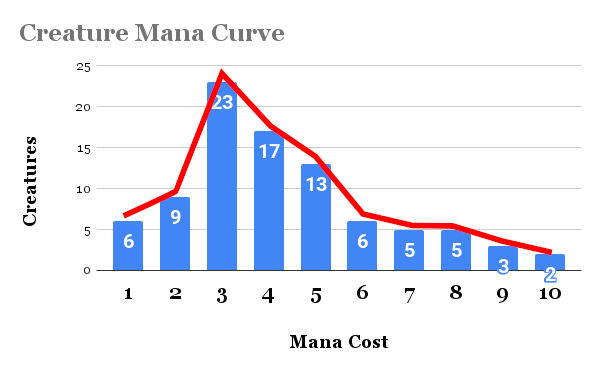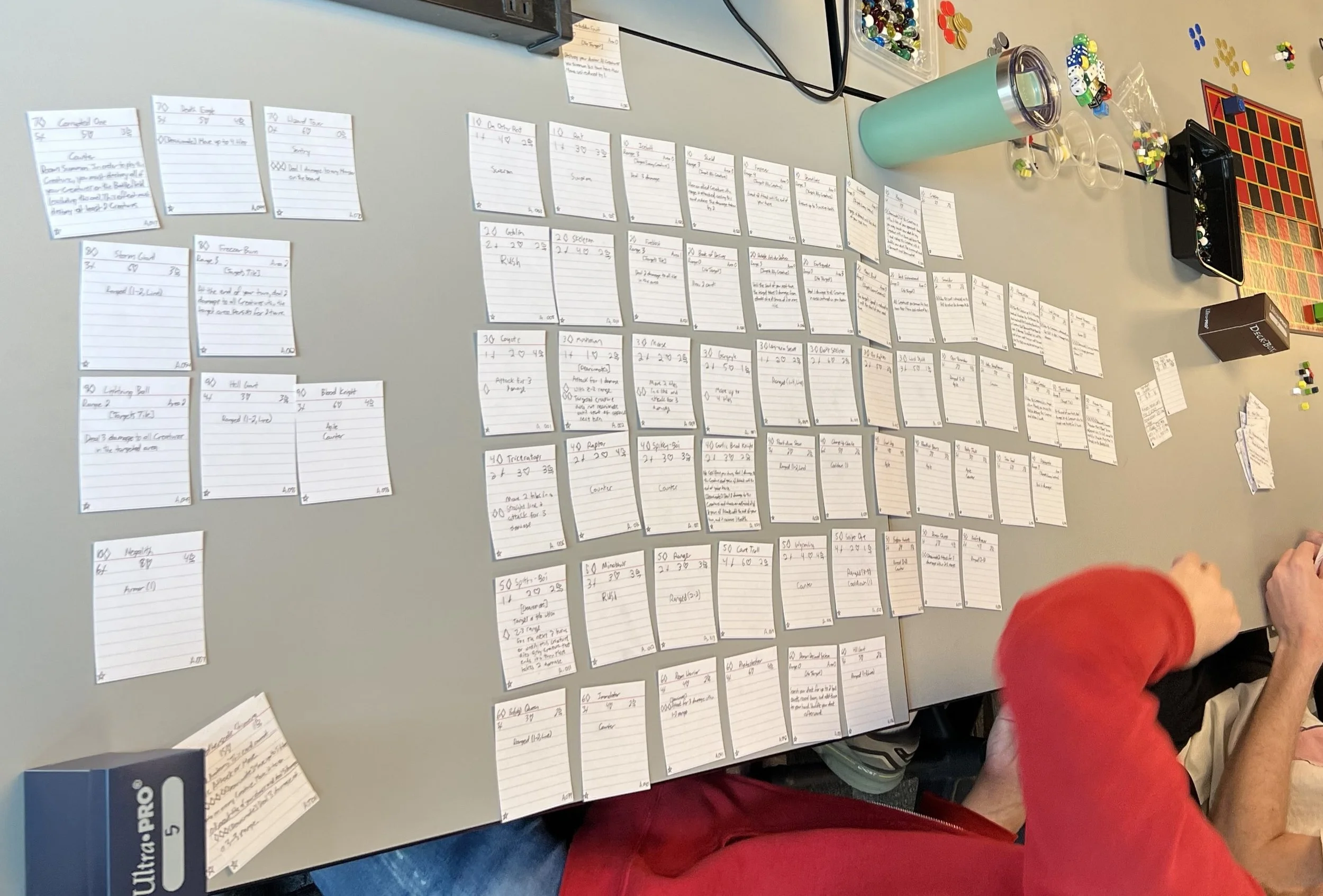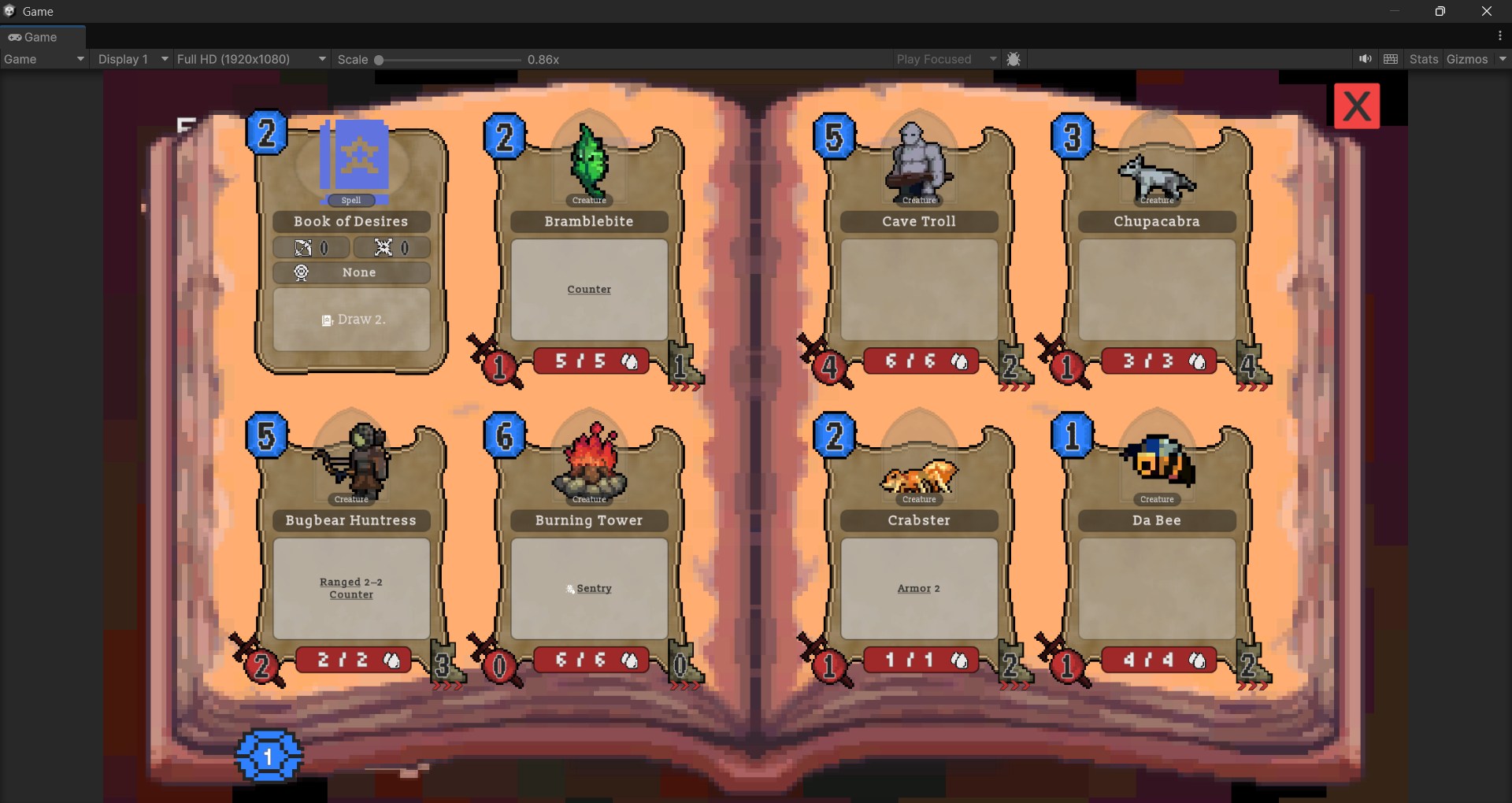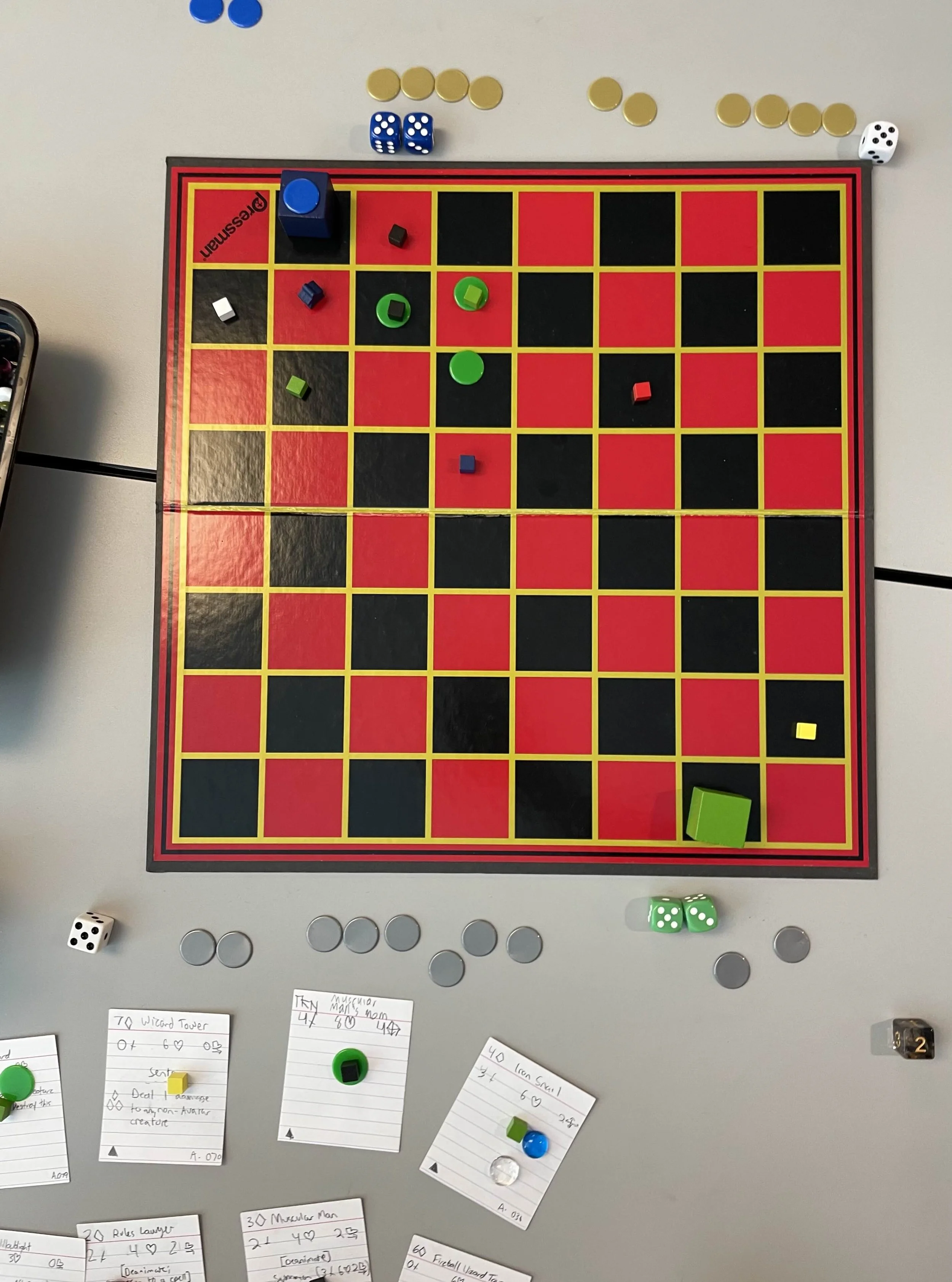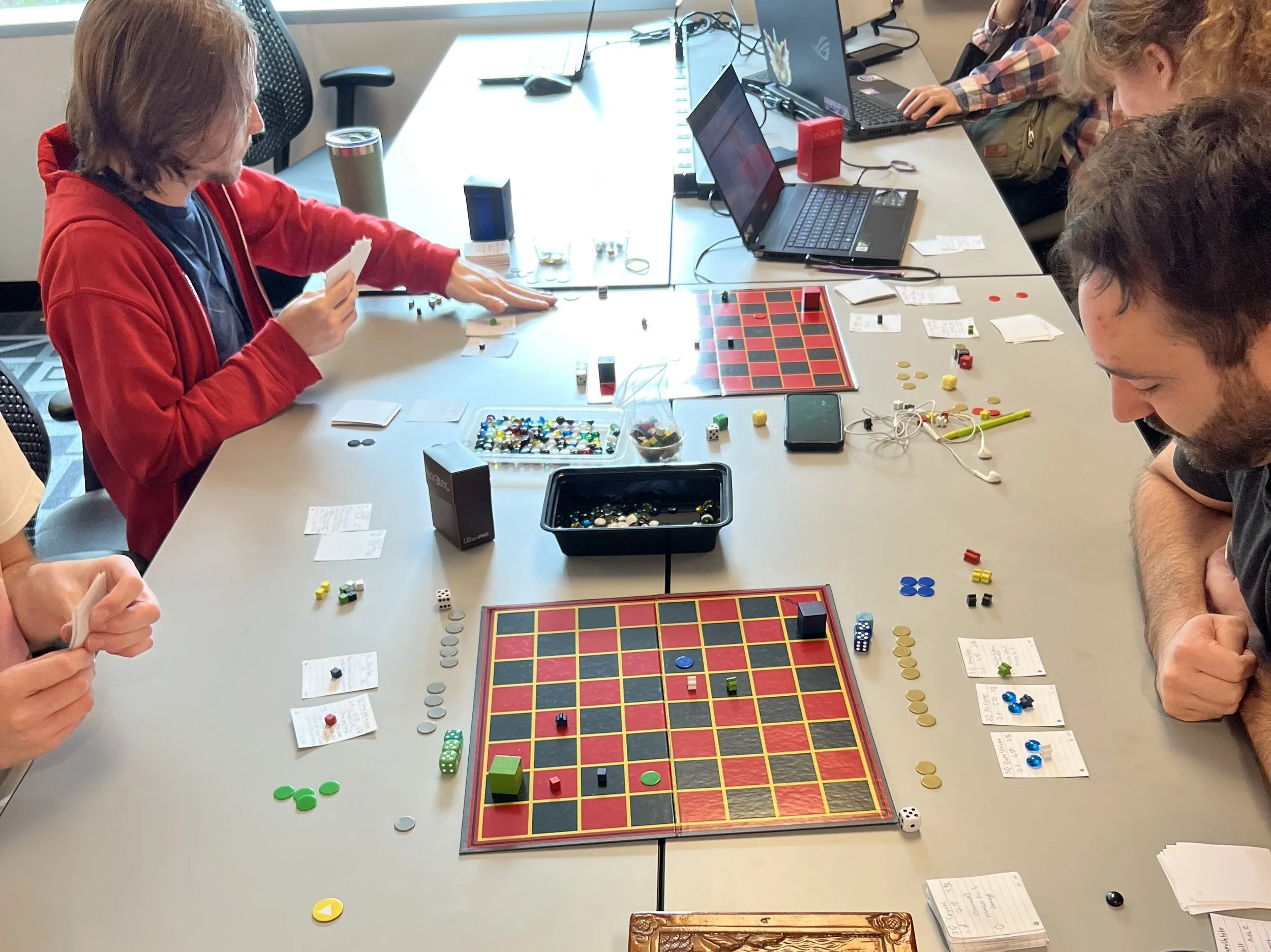Cardinomicon
A head-to-head card battler between bored Necromancers looking for something to do after taking over the world. Summon eccentric undead creatures and cast whimsical spells in this competitive strategy game that blends Magic: the Gathering with Chess. What will you summon in Cardinomicon?
Genre
Strategy
Engine
Unity
Workload
28 weeks / 7-8 hours a week
Project Type
Student Project
Year
2025
Team Size
6
Systems Designer
Card cost analysis with Google Sheets
Rapid playtest design
Card designer
Core mechanics designer
My Roles
UI/UX Designer
Wireframing in Figma
VFX animator in Unity
AB testing
Iconography
Contributions
Cardinomicon was my favorite project at DigiPen. Working with my five other teammates on Fuzzy Dream was a pleasure, and I always looked forward to it. As part of a small team, I had to wear many hats. In addition to systems and UI design, I was the team’s playtest coordinator, art director, UX researcher, and producer.
As a systems designer, I designed over a quarter of our 120 creature and spell cards. I also created the game’s core rules, cost-benefit formulas, and many creature traits and skills. The formulas were implemented and calculated using Google Sheets.
I also served as the game’s UI designer. I wireframed the in-game UI using Figma and card visuals with Unity prefabs. I built it with Unity’s UI and scripted its behavior using C#. I implemented the tooltip system and other visual signifiers like board overlays for different actions and feedback to reinforce player behavior.
Process
Core System Design
Summoning creature cards is central to gameplay in Cardinomicon. All of them have 4 core stats:
Mana cost = Attack, Health, and Speed benefits.
Finding the basic cost-benefit relationship for each creature early on was essential to creating a game with a card library of over 100 cards.
Once the core relationship between the basic stats was established, more interesting mechanics, like creature traits, were introduced. Here are a few examples from the list of the nine creature traits in the game:
Agile: can move after attacking.
Rush: enters the game with the ability to move and attack.
Sentry: cannot move; no spell can move this creature.
In addition to traits, creatures can have up to two skills.
Skills function somewhat like traits but cost mana to activate.
Most skills were designed with an appropriate cost to offset their value and not disrupt the core formula.
Some skills had game-altering effects, like creating dangerous terrain or dealing area of effect damage.
The creatures’ stats, traits, and skills were input into a master spreadsheet using algorithms to calculate their expected cost.
The stats would also be adjusted and/or verified through rigorous playtesting.
The spreadsheet and hands-on playtesting combined generate the mana curve, representing the distribution of creature costs in the game.
One of our goals was to finish the game with a mana curve resembling that shape, which roughly reflects the distribution of a player’s deck.
Paper Prototyping & Rapid Playtesting
Pencil and paper notecards were used to create new cards, and simple board game components, like dice, tokens, and meeples, were used to track all the other necessary resources, making it incredibly easy to pick up and play.
As a team, we playtested two times a week, sometimes with multiple games running simultaneously, resulting in instant actionable feedback.
Within an afternoon of work, a new mechanic would be introduced, playtested on the table, and adjusted in the spreadsheets. During the early development phase, we could test up to three new features weekly during our twice-a-week lab time.
Playtesting with paper proved the feasibility of creature features, rules changes, and overall system balance, allowing us to create a digital prototype in less than six weeks.
Card design
One of our team goals was that every card should be viable, meaning it should have a place in some player’s deck.
Designing cards with low mana costs presented a unique challenge.
There were only so many creatures that could be designed using the basic formula without significant compromises.
My favorite creature that represents the lean design approach is Bramblebite.
It sacrifices attack and speed in favor of boosting its health.
It is a perfect example of an early game defensive card.
Its low attack value means the ordinarily expensive counter trait is quite affordable.
Combined with its high health and the low-cost skill to heal itself, it is challenging for other early game creatures to clear.

